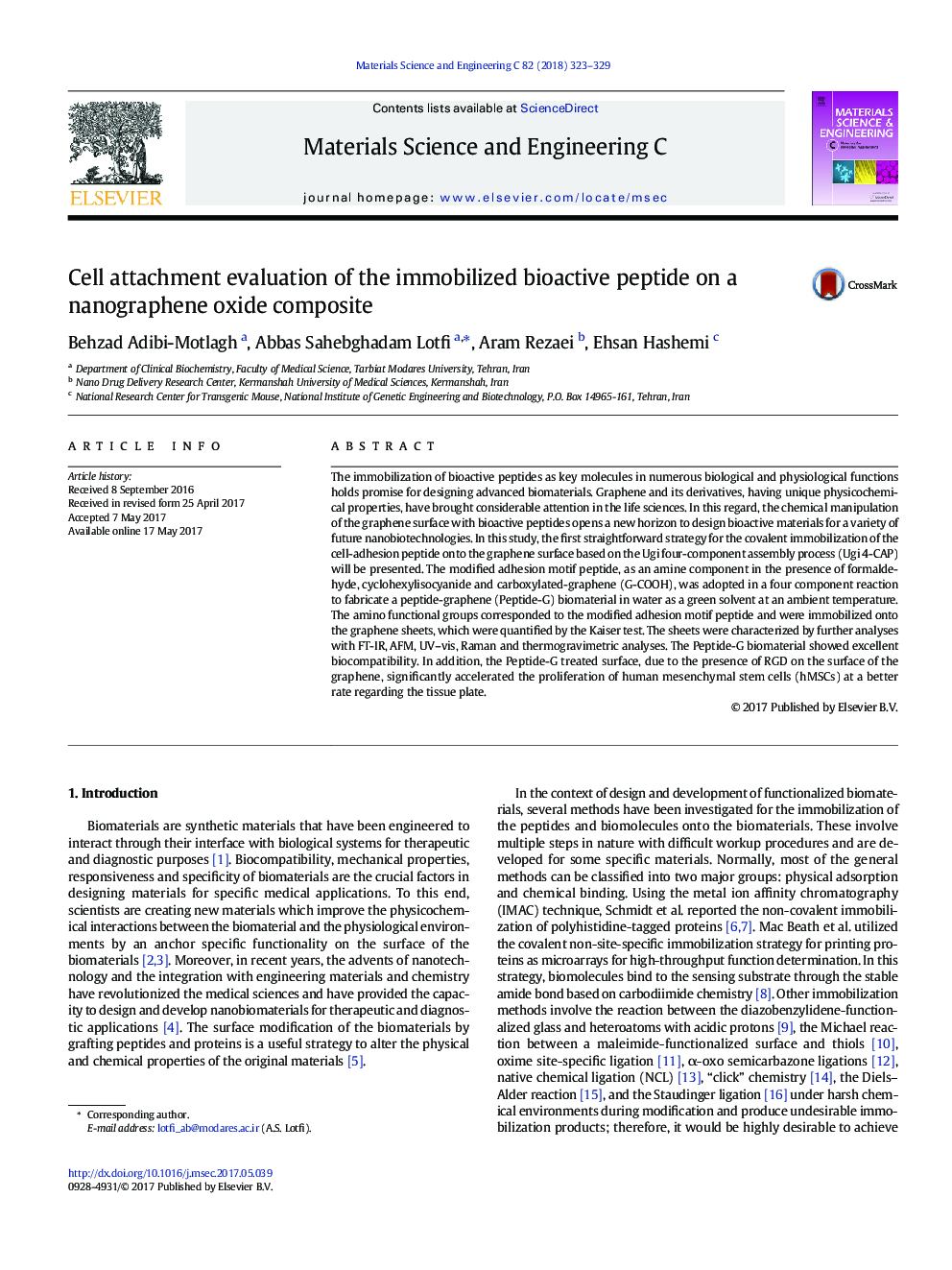| Article ID | Journal | Published Year | Pages | File Type |
|---|---|---|---|---|
| 5434193 | Materials Science and Engineering: C | 2018 | 7 Pages |
â¢Covalent immobilization of cell-adhesion peptide onto graphene surface was made.â¢Peptide-G scaffold significantly accelerate the proliferation of human mesenchymal stem cells (hMSCs).â¢The Peptide-G biomaterial showed excellent biocompatibility
The immobilization of bioactive peptides as key molecules in numerous biological and physiological functions holds promise for designing advanced biomaterials. Graphene and its derivatives, having unique physicochemical properties, have brought considerable attention in the life sciences. In this regard, the chemical manipulation of the graphene surface with bioactive peptides opens a new horizon to design bioactive materials for a variety of future nanobiotechnologies. In this study, the first straightforward strategy for the covalent immobilization of the cell-adhesion peptide onto the graphene surface based on the Ugi four-component assembly process (Ugi 4-CAP) will be presented. The modified adhesion motif peptide, as an amine component in the presence of formaldehyde, cyclohexylisocyanide and carboxylated-graphene (G-COOH), was adopted in a four component reaction to fabricate a peptide-graphene (Peptide-G) biomaterial in water as a green solvent at an ambient temperature. The amino functional groups corresponded to the modified adhesion motif peptide and were immobilized onto the graphene sheets, which were quantified by the Kaiser test. The sheets were characterized by further analyses with FT-IR, AFM, UV-vis, Raman and thermogravimetric analyses. The Peptide-G biomaterial showed excellent biocompatibility. In addition, the Peptide-G treated surface, due to the presence of RGD on the surface of the graphene, significantly accelerated the proliferation of human mesenchymal stem cells (hMSCs) at a better rate regarding the tissue plate.
